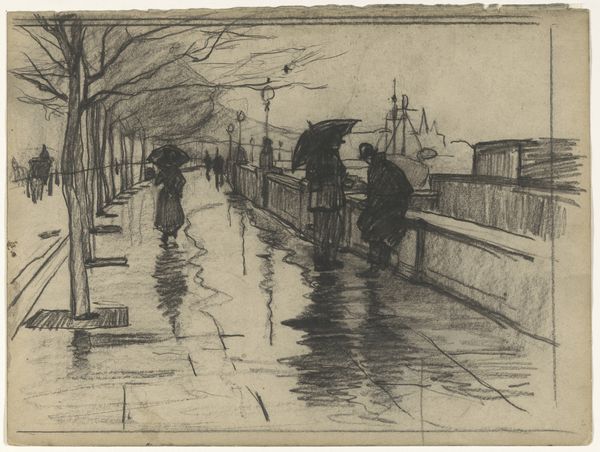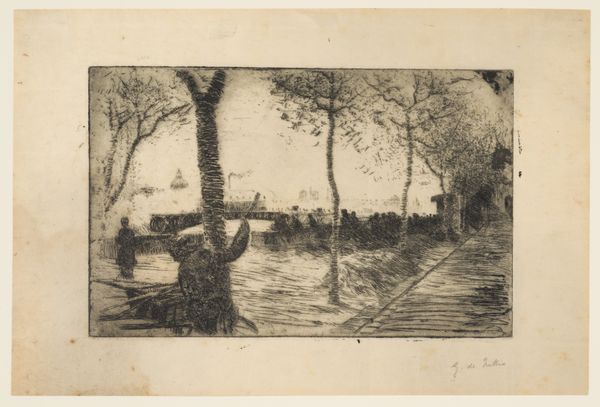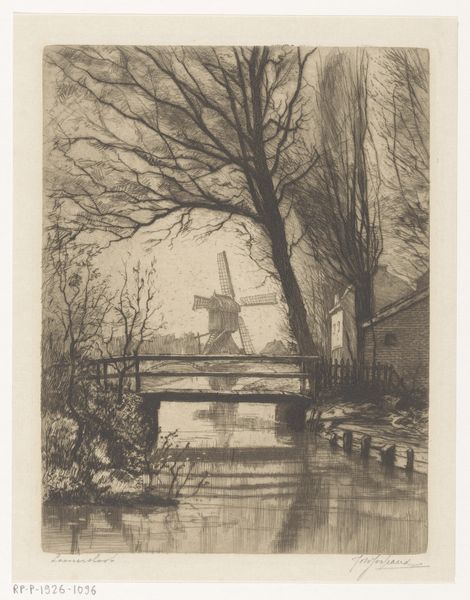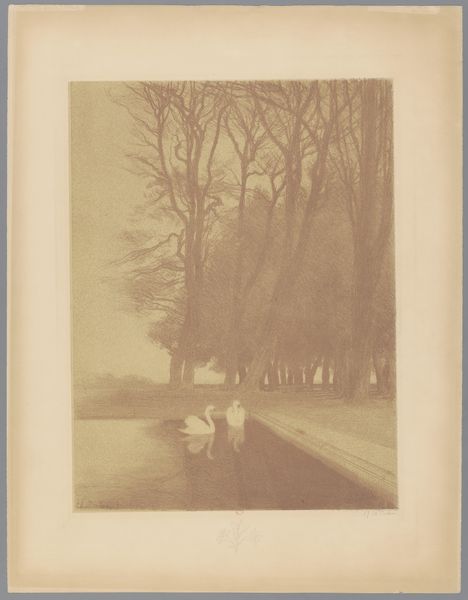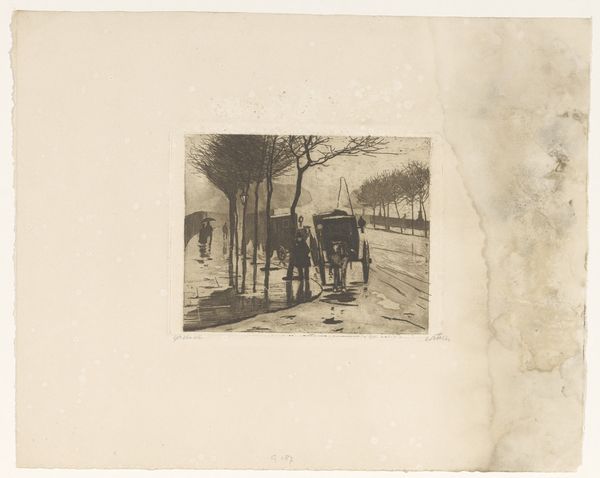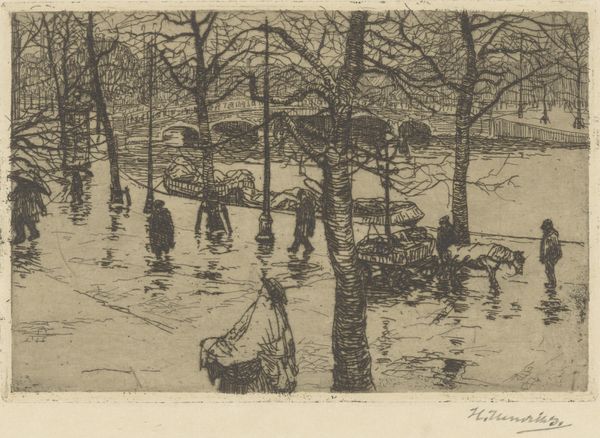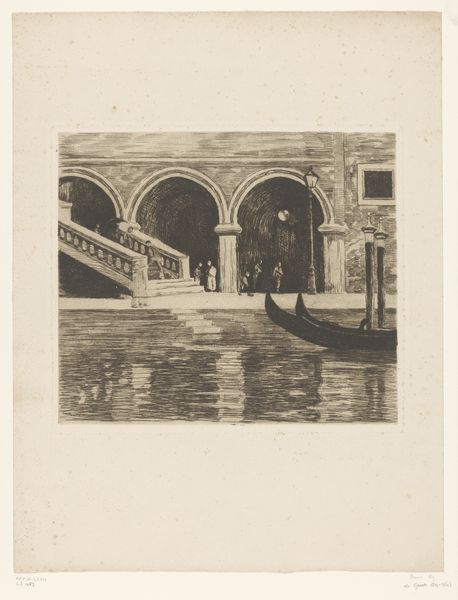
Dimensions: height 227 mm, width 303 mm
Copyright: Rijks Museum: Open Domain
Editor: Here we have Willem Witsen’s etching, "View of Victoria Embankment in London," likely created sometime between 1890 and 1944. The atmosphere is incredibly somber, wouldn't you agree? What strikes you most about the cultural context surrounding a cityscape like this? Curator: The melancholy feel is palpable. It evokes the social realities of the late 19th and early 20th centuries. Consider London then: a global hub, yes, but also a place marked by stark class divisions and industrial fog. Etchings like this offered a specific view of the urban experience – one that was often consumed by a middle-class audience, keen on picturesque views that were also subtly laced with social commentary. What do you make of the people depicted? Editor: They seem isolated, despite being in a public space. Almost like ghosts in the machine of the city. Do you think that loneliness was a conscious choice by the artist? Curator: Very possibly. The "Flâneur," a detached observer of city life, was a popular figure at the time. This detached, almost melancholic, perspective allowed artists to comment on social issues without direct engagement. But the art world was a business too; London views sold well! Is Witsen perhaps playing into expectations while still offering a commentary on alienation in the modern city? It makes you think about the role artists play in documenting and interpreting their environments, doesn't it? Editor: It absolutely does. It's like the art market itself shapes what stories get told about city life. Thanks, I will look at prints in museums with very different eyes from now on! Curator: My pleasure, and it will be my gain too. Looking through your fresh set of eyes is beneficial for myself.
Comments
No comments
Be the first to comment and join the conversation on the ultimate creative platform.
